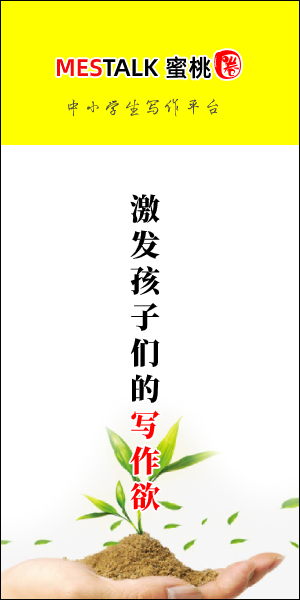首页 >
胰岛素
✍ dations ◷ 2025-12-09 00:42:19 #胰岛素
1A7F, 1AI0, 1AIY, 1B9E, 1BEN, 1EFE, 1EV3, 1EV6, 1EVR, 1FU2, 1FUB, 1G7A, 1G7B, 1GUJ, 1HIQ, 1HIS, 1HIT, 1HLS, 1HTV, 1HUI, 1IOG, 1IOH, 1J73, 1JCA, 1JCO, 1K3M, 1KMF, 1LKQ, 1LPH, 1MHI, 1MHJ, 1MSO, 1OS3, 1OS4, 1Q4V, 1QIY, 1QIZ, 1QJ0, 1RWE, 1SF1, 1SJT, 1SJU, 1T0C, 1T1K, 1T1P, 1T1Q, 1TRZ, 1TYL, 1TYM, 1UZ9, 1VKT, 1W8P, 1XDA, 1XGL, 1XW7, 1ZEG, 1ZEH, 1ZNJ, 2AIY, 2C8Q, 2C8R, 2CEU, 2G54, 2G56, 2H67, 2HH4, 2HHO, 2HIU, 2JMN, 2JUM, 2JUU, 2JUV, 2JV1, 2JZQ, 2K91, 2K9R, 2KJJ, 2KJU, 2KQP, 2KQQ, 2KXK, 2L1Y, 2L1Z, 2LGB, 2LWZ, 2M1D, 2M1E, 2M2M, 2M2N, 2M2O, 2M2P, 2OLY, 2OLZ, 2OM0, 2OM1, 2OMG, 2OMH, 2OMI, 2QIU, 2R34, 2R35, 2R36, 2RN5, 2VJZ, 2VK0, 2W44, 2WBY, 2WC0, 2WRU, 2WRV, 2WRW, 2WRX, 2WS0, 2WS1, 2WS4, 2WS6, 2WS7, 3AIY, 3BRR, 3BXQ, 3E7Y, 3E7Z, 3EXX, 3FQ9, 3HYD, 3I3Z, 3I40, 3ILG, 3INC, 3IR0, 3JSD, 3KQ6, 3P2X, 3P33, 3Q6E, 3ROV, 3TT8, 3U4N, 3UTQ, 3UTS, 3UTT, 3V19, 3V1G, 3W11, 3W12, 3W13, 3W7Y, 3W7Z, 3W80, 3ZI3, 3ZQR, 3ZS2, 3ZU1, 4AIY, 4AJX, 4AJZ, 4AK0, 4AKJ, 4EFX, 4EWW, 4EWX, 4EWZ, 4EX0, 4EX1, 4EXX, 4EY1, 4EY9, 4EYD, 4EYN, 4EYP, 4F0N, 4F0O, 4F1A, 4F1B, 4F1C, 4F1D, 4F1F, 4F1G, 4F4T, 4F4V, 4F51, 4F8F, 4FG3, 4FKA, 4GBC, 4GBI, 4GBK, 4GBL, 4GBN, 4IUZ, 5AIY· insulin receptor binding
· insulin-like growth factor receptor binding
· hormone activity· extracellular space
· endoplasmic reticulum lumen
· Golgi lumen
· endosome lumen· negative regulation of acute inflammatory response
· glucose metabolic process
· energy reserve metabolic process
· regulation of transcription, DNA-dependent
· regulation of cellular amino acid metabolic process
· acute-phase response
· G-protein coupled receptor signaling pathway
· cell-cell signaling
· positive regulation of cell proliferation
· insulin receptor signaling pathway
· positive regulation of phosphatidylinositol 3-kinase cascade
· glucose transport
· regulation of transmembrane transporter activity
· positive regulation of cell growth
· positive regulation of cell migration
· endocrine pancreas development
· positive regulation of protein autophosphorylation
· activation of protein kinase B activity
· positive regulation of cellular protein metabolic process
· negative regulation of protein oligomerization
· regulation of protein localization
· negative regulation of NAD(P)H oxidase activity
· wound healing
· negative regulation of protein catabolic process
· glucose homeostasis
· negative regulation of apoptotic process
· positive regulation of MAPK cascade
· cellular protein metabolic process
· small molecule metabolic process
· positive regulation of nitric oxide biosynthetic process
· positive regulation of cell differentiation
· negative regulation of gluconeogenesis
· positive regulation of glycogen biosynthetic process
· positive regulation of DNA replication
· negative regulation of glycogen catabolic process
· positive regulation of glycolysis
· positive regulation of mitosis
· negative regulation of proteolysis
· negative regulation of vasodilation
· positive regulation of vasodilation
· negative regulation of fatty acid metabolic process
· positive regulation of glucose import
· positive regulation of insulin receptor signaling pathway
· alpha-beta T cell activation
· positive regulation of lipid biosynthetic process
· regulation of protein secretion
· negative regulation of protein secretion
· positive regulation of cytokine secretion
· positive regulation of peptidyl-tyrosine phosphorylation
· regulation of insulin secretion
· negative regulation of lipid catabolic process
· positive regulation of nitric-oxide synthase activity
· positive regulation of NF-kappaB transcription factor activity
· positive regulation of protein kinase B signaling cascade
· fatty acid homeostasis
· negative regulation of respiratory burst involved in inflammatory response
· positive regulation of respiratory burst
· positive regulation of peptide hormone secretion
· positive regulation of brown fat cell differentiation胰岛素(英语:Insulin)是一种蛋白质激素,由胰脏内的胰岛β细胞分泌。胰岛素参与调节碳水化合物和脂肪代谢,控制血糖平衡,可促使肝脏和骨骼肌细胞将血液中的葡萄糖转化为糖原来利用,亦即将血糖转为肝糖和细胞内的葡萄糖。缺乏有效的胰岛素会导致血糖过高、糖尿病。因此注射胰岛素可治疗第一型糖尿病。其分子量为5808道尔顿。胰岛素应用于临床数十年,从抗原性较强的第一代动物胰岛素到基因重组但餐前需要等待30分钟的第二代人胰岛素,再发展到现在可以很好模拟生理性人胰岛素分泌模式的胰岛素类似物。目前更好的模拟正常人体生理降糖模式的胰岛素是第三代胰岛素——胰岛素类似物。1921年弗雷德里克·班丁(Frederick Banting)与约翰·麦克劳德(John Macleod)合作首次成功提取到了胰岛素,不同种族哺乳动物(人、牛、羊、猪等)的胰岛素分子的氨基酸序列和结构稍有差异,其中猪胰岛素与人的最为接近。动物胰岛素是最早应用于糖尿病治疗的胰岛素注射制剂,一般是猪胰岛素,猪胰岛素与人胰岛素存在1至4个氨基酸的不同,因此容易发生免疫反应,注射部位皮下脂肪萎缩或增生,胰岛素过敏反应,并且由于其免疫原性高,容易反复发生高血糖和低血糖,容易出现胰岛素耐药。20世纪80年代,人们通过基因工程(重组DNA)制造出高纯度的合成人胰岛素,其结构和人体自身份泌的胰岛素一样。对比动物胰岛素,人胰岛素较少发生过敏反应或者胰岛素抵抗,所以皮下脂肪萎缩的现象也随之减少;由于人胰岛素抗体少,所以注射量比动物胰岛素平均减少30%;人胰岛素的稳定性高于动物胰岛素,常温25℃左右常温可保存人胰岛素4周。在起效时间、峰值时间、作用持续时间上不能模拟生理性人胰岛素分泌模式。需在餐前30分钟注射、有较高的夜间低血糖风险。20世纪90年代末,在对人胰岛素结构和成分的深入研究中发现,对肽链进行修饰:利用基因工程技术,改变胰岛素肽链上某些部位的氨基酸组合;改变等电点;增加六聚体强度;以钴离子替代锌离子;在分子中增加脂肪酸链,加大与白蛋白的结合,均有可能改变其理化和生物学特征,从而可研制出更适合人体生理需要的胰岛素类似物(insulin similitude)。胰岛素类似物可紧临餐使用,也称为餐时胰岛素或速效胰岛素。胰岛素类似物优势包括:按照化学结构和来源:动物胰岛素、人胰岛素、胰岛素类似物。人胰岛素如诺和灵系列,胰岛素类似物如门冬胰岛素、门冬胰岛素30、还有地特胰岛素注射液。按作用时间的特点:速效胰岛素类似物、短效胰岛素、中效胰岛素、长效胰岛素(包括长效胰岛素类似物)和预混胰岛素(预混胰岛素类似物),常见速效胰岛素类似物如门冬胰岛素,长效胰岛素类似物如地特胰岛素。临床试验证明,胰岛素类似物在模拟生理性胰岛素分泌和减少低血糖发生的危险性方面优于人胰岛素。
相关
- 免疫缺陷免疫缺陷(英语:immunodeficiency)是指免疫系统抵抗传染病的能力失常或欠缺。免疫缺陷还可能降低肿瘤免疫监视功能。免疫缺陷多为继发性(secondary)免疫缺陷,不过也有些人生来就有
- 间质性肺病间质性肺病(Interstitial Lung Disease(ILD),又称为弥漫性肺病 Diffuse Parenchymal Lung Disease(DPLD))是一群主要侵犯肺泡上皮细胞,肺微血管内皮细胞、基底膜以及肺内血管及淋巴
- 退伍军人菌属Legionella adelaidensis Legionella anisa Legionella beliardensis Legionella birminghamensis Legionella bozemanii Legionella brunensis Legionella busanensis Legi
- 复方新诺明扑菌特(Trimethoprim/sulfamethoxazole, TMP/SMX),较为人知的名称是复方新诺明、磺胺剂(co-trimoxazole),是一种用来防治多种因为细菌而引起感染的抗生素,用以治疗各种细菌感
- 氨基糖苷类抗生素胺基糖苷类抗生素(aminoglycoside)是具有氨基糖与氨基环醇(英语:aminocyclitol)结构的一类抗生素,在临床主要用于对革兰氏阴性菌、绿脓杆菌等感染的治疗,1960年代到1970年代曾经非
- 词在语言学中,词(英语:word),又称为单词,是能独立运用并含有语义内容或语用内容(即具有表面含义或实际含义)的最小单位。词的集合称为词汇,例如:所有中文词统称为“中文词汇”等。词典是
- 肌萎缩性脊髓侧索硬化症肌萎缩性脊髓侧索硬化症(英语:Amyotrophic lateral sclerosis,缩写为 ALS),也称为肌萎缩侧索硬化症,有时也称为卢·贾里格症(英语:Lou Gehrig's disease)、渐冻人症、运动神经元病,是
- ℉华氏温标是一种温标,符号为℉。华氏温标的定义是:在标准大气压下,冰的熔点为32℉,水的沸点为212℉,中间有180等分,每等分为华氏1度。根据德国科学家华伦海特于1724年所写的一篇期
- 航天飞机航天飞机(英语:Space Shuttle),是一种为穿越大气层和太空的界线(高度100公里的卡门线)而设计的火箭动力飞机。航天飞机结合了飞机与航天器的性质,像有翅膀的航天器。迄今只有美国与
- 负染色法负染色法(Negative stain)是一种染色方法,常用于不透光液体标本的镜检。由于其染色处理过程并非针对菌体本身,故又称“衬托染色法”、“间接染色法”。在负染色法中,标本不需要热
